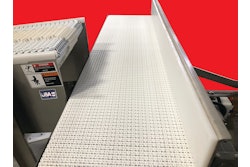A facility built with sanitary design in mind can help manufacturers meet food safety goals, while an eye on ever-changing industry trends ensures that program stays successful. Read this coverage from Senior Editor Michael Costa.
Food safety is the cornerstone of any thriving food processing operation—without it, a company can lose the trust of customers and go out of business faster than it took to build the brand. While the focus of food safety has often been on employees and processing lines where food is manufactured, a bird’s-eye view can reveal the building itself—floors, walls, ceilings, and more—is also crucial to the success or failure of a food safety program.
“Sanitary designs are important because it reduces food safety hazards within the manufacturing environment, making the overall operation safer for food and more manageable for staff,” says Kara Scherer, food safety lead at Dennis Group. “[By definition], sanitary design, or hygienic design, is the incorporation of good manufacturing practices (GMP) into the construction of facilities, equipment, and tools to reduce the likelihood for product contamination, to withstand environmental conditions, and to allow for effective cleaning in a timely manner.”
The food processing industry evolves each year, and with it, new challenges arise for effective hygienic facility design. Here, we’ll explore what foundational strategies still work, and what recent changes are impacting today’s manufacturing plants.
Continue to the full article:
Today's Strategies for Hygienic Plant Design




















